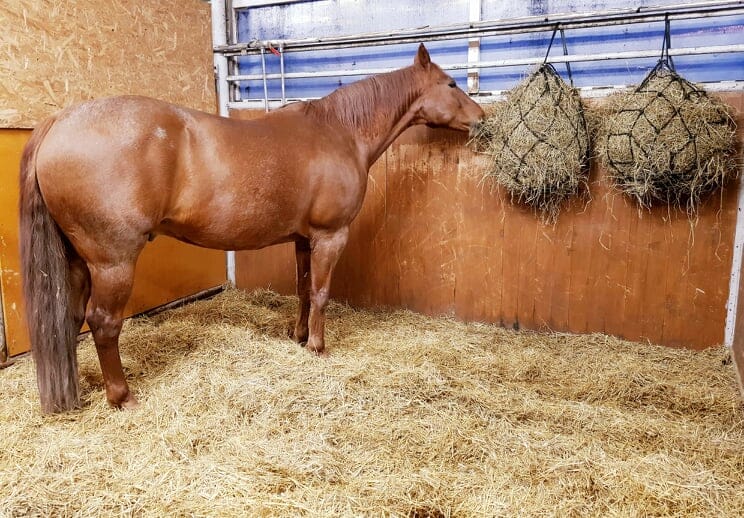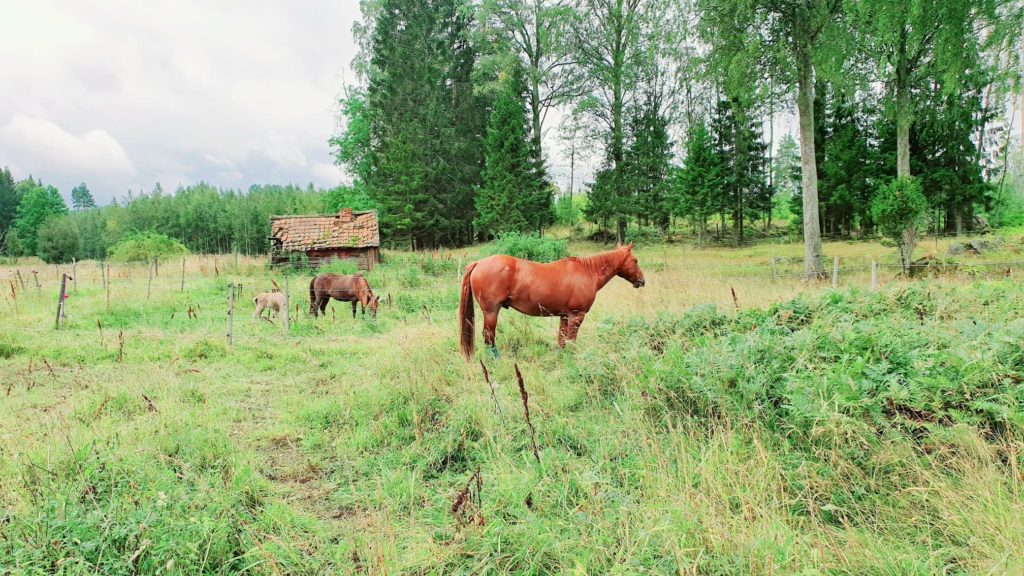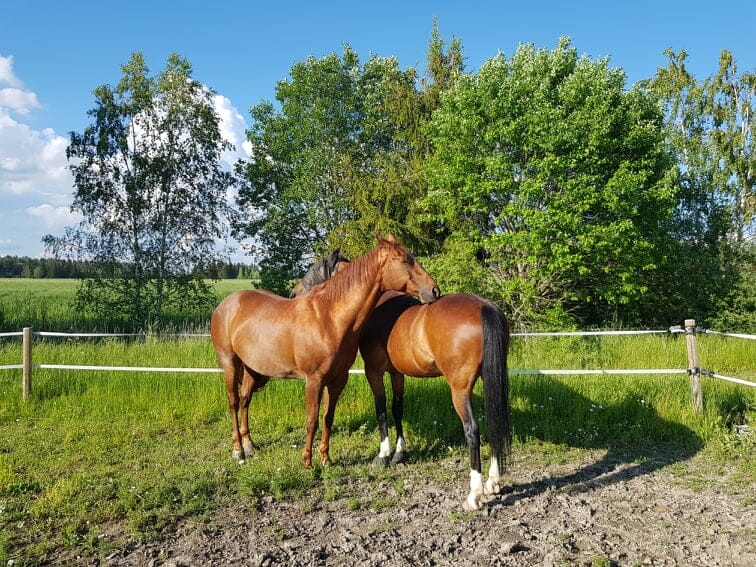If I asked you, what your horse’s environment is like, you’d probably have a short answer for me. Something like: “He is at a boarding stable, with access to pasture” or ‘He lives in an open stabling arrangement with a small herd and has access to generous meadows with shelter.’
And your answer is correct. But what if I told you, that this only describes about 10% of the actual environment your horse lives in?
During my time as a horse owner, my horse has been to several boarding stables and I have come to realize what other factors there are that determine how well my horse is doing physically and also mentally.

THE IMPORTANCE OF WELLBEING
In recent years it has become more natural for employers to identify the factors that impair their employee’s wellbeing and performance. If you ever had to sit through this kind of workshop or fill out a questionnaire, it might have looked something like this.
- Is the lighting in the office ok? Does it hurt your eyes or is it comfortable?
- Are there a lot of noises that make it difficult for you to concentrate?
- Does your current environment allow you to be creative?
- Do the ergonomics at your workstation support your work and wellbeing (furniture, tools, lighting, field of vision, acoustics)?
- Is the number of meetings ok or do you find the number of meetings stressful?
You might have noticed the questions are much more about our senses and how we perceive things than one might guess from the start. And yes, that’s all about the environment!
WHAT’S IMPORTANT FOR YOUR HORSE?
The challenge for horse owners is to use their senses as if they were their horse. How is my horse perceiving this environment I am providing? Normally when you choose an environment for your horse to live in, you already ask many of those important questions.
- How big is the stall / pasture?
- How much forage does my horse get?
- What material is used for bedding?
- How many hours of turn out?
- How are the routines around handling the horses?
- Where does the forage come from? Bought in or produced? What´s the quality? Is it analyzed?
- Is there an indoor arena? What is the footing like? How is the footing cared for?

YOUR HORSE AND STRESS
Even though you might ask a lot of questions, there are things you won’t be able to get an answer to. I once moved to another stable, because of an incident which made me realize that this environment was too stressful for my horse. At that stable there was a lot of shouting and arguing and I had a gut feeling, that my horse finds this very stressful and uncomfortable. To be honest, I felt very uncomfortable. I had his heart rate monitor attached in preparation to go out hacking. He was calm and relaxed with a normal heart rate of 34 bpm. Suddenly my watch vibrated, and the heart rate had peaked to over 200 bpm. One of the people often associated with arguing and shouting had passed by. It was a busy afternoon at the stable, there had been lots of movement, both horses and people, but that hadn’t bothered him at all. To guard my horse’s mental health, it was an easy decision for me to change stables. In all stables I went afterwards, I tried to be very observant of how the atmosphere was when entering and being around for a while. The thing to remember is that you might just be around a couple of hours per day. Your horse lives there 24/7. What do the other 22 hours a day look like for your horse?
DOUBLE CHECK THE BASICS!
Another quite revealing question can be: “Can I please taste some of the water the horses get to drink?” Sounds innocent enough, right? Well, this is another lesson I had to learn. I hadn’t been thorough enough on my first visit. Filling up the buckets, the water had a reddish-brown color. I tasted it and it was disgusting. It smelled and the taste of iron was intense. The activated carbon filter we purchased, had some effect, but still my horse drank much too little for it to be healthy. As mentioned before, some things are easier to check for than others. And some things can easily be remedied, others can´t. But using all your senses (touch, sight, hearing, smell and taste) and trying to put yourself into your horses’ shoes might make a difference. Try to envision how your horse perceives his surroundings, maybe the next time you go to the barn to check on your horse. Just go there with the goal to experience being there. Breathe consciously and close your eyes. What smells and sounds do you pick up on? What is the atmosphere like during the time you are there? Is it calm and friendly or hectic and loud? What do you smell, hear, feel when entering your horses stall or pasture? If you haven´t done it yet, go and have that glass of water. What things do you see when standing in your horses’ stall, pasture or when you are in the indoor arena? Do this at different times during a day and different months. You might be surprised how much your horses’ environment can change from one hour to another, or one month to another.
IF YOU LIKED THIS POST, YOU MIGHT ALSO BE INTERESTED IN THIS CONTENT:
- Video: Low stress solution to behavior problems
- Online Course : Introduction to Behavior for Horse Owners
- Members’ video series: Building Equitopia
- Free Course for members: Introduction a new horse to the herd




